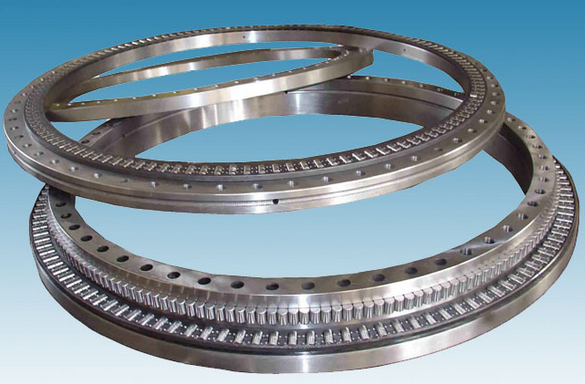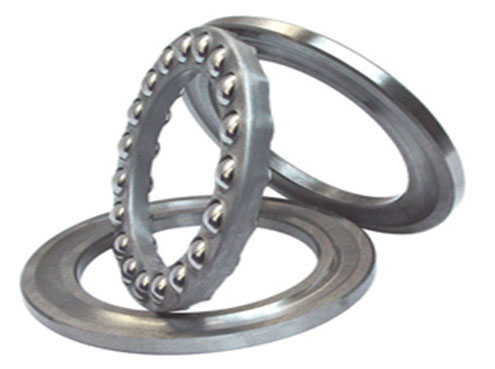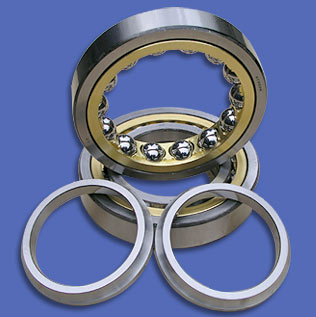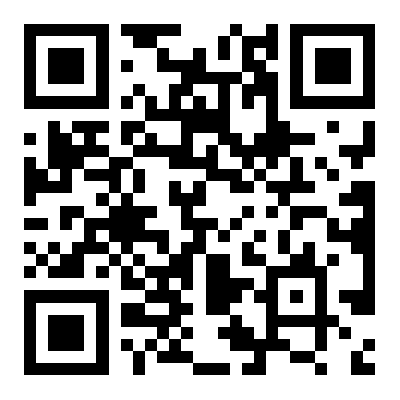Thrust roller bearings include thrust cylindrical roller bearings, thrust spherical roller bearings, thrust tapered roller bearings, and thrust needle roller bearings according to their different structures.
Thrust cylindrical roller bearings are divided into single row cylindrical roller bearings and double row cylindrical roller bearings based on the number of bearing roller rows.
Single row thrust cylindrical roller bearings can withstand axial loads in one direction and limit axial displacement in one direction. Double row thrust cylindrical roller bearings can withstand bidirectional axial loads and limit axial displacement in both directions.
The inner and outer raceways of the thrust spherical roller bearing are spherical in shape, and the rolling element is also spherical in shape. Therefore, it has centering performance, and the allowable angle error is 2 ° to 3 °. It has a large axial load and can also withstand a certain amount of radial load.
Thrust spherical roller bearings can withstand unidirectional axial loads and limit axial displacement in one direction. The allowed speed is higher.
Thrust tapered roller bearing
The inner and outer raceways of the thrust tapered roller bearing are spherical cones, and the rolling element is also conical. The intersection of the extension lines of the three converges at the same point on the axis of the bearing. Therefore, the motion friction is relatively small compared to other thrust roller bearings.
Thrust tapered roller bearings do not allow angular errors between the shaft and the bearing seat.
Thrust needle roller bearing
The performance of thrust needle roller bearings is similar to that of thrust cylindrical roller bearings. But compared to thrust cylindrical roller bearings, the axial size is smaller and the load capacity is greater. Due to the longer length of the needle roller, there is greater friction and lower rotational speed.
Thrust needle roller bearings are divided into unidirectional needle roller bearings and bidirectional needle roller bearings based on the number of bearing roller rows.
Unidirectional thrust needle roller bearings can withstand unidirectional axial loads and limit axial displacement in one direction.
Bidirectional thrust needle roller bearings can withstand bidirectional axial loads and limit axial displacement in both directions.
No angle error is allowed during the installation of thrust needle bearings.
Other structural forms of thrust roller bearings can also be provided, such as double row thrust cylindrical roller bearings, thrust roller bearings with outer covers, thrust roller bearings with flat washers, non ring thrust cylindrical roller bearings, and various other products.
Holder
The cage of thrust ball bearings generally adopts steel plate stamped cages, as well as vehicle made steel, brass solid cages, and engineering plastic cages such as glass fiber reinforced nylon 66.
Minimum load
In order to ensure good operation of bearings, thrust roller bearings, like other ball and roller bearings, must apply a certain amount of minimum load, especially for high-speed, high acceleration, or working under conditions with frequent changes in load direction. Because of these operating conditions, the inertia force of the rolling element and the cage, as well as the friction inside the lubricant, will have a negative impact on the rolling and rotating accuracy of the bearing, and there may be harmful sliding motion between the rolling element and the raceway that is harmful to the bearing.
Starting at low temperatures or with high lubricant viscosity may require a larger minimum load. Usually, the weight of the bearing support itself, combined with the load borne by the bearing, has exceeded the minimum required load. If the minimum load has not been reached, the structural bearing must apply additional axial load to meet the minimum load requirements. In the application of thrust ball bearings, springs, etc. can generally be used to apply axial preload.
Dimensions, tolerances
The external dimensions of standard thrust roller bearings comply with the provisions of GB/T273.2 "General Scheme for External Dimensions of Rolling Bearings and Thrust Bearings", GB/T4663 "External Dimensions of Rolling Bearings and Thrust Cylindrical Roller Bearings", GB/T5859 "External Dimensions of Rolling Bearings and Thrust Self aligning Roller Bearings", etc.
The tolerances of standard thrust roller bearings comply with the provisions of GB/T307.4 "Rolling Bearings, Thrust Bearings, Tolerances", GB/T7750 "Boundary Dimensions of Rolling Bearings, Thrust Self aligning Roller Bearings", GB/T7751 "Boundary Dimensions of Rolling Bearings, Thrust Tapered Roller Bearings", etc.
For thrust roller bearings that bear dynamic loads, the equivalent dynamic load can be calculated as follows:
α= 90 ° P=Fa
α≠ 90 ° P=XFr+YFa
Unidirectional bearing
Fa/Fr>e X=tan α Y=1 e=1.5tan α
Bidirectional bearing
Fa/Fr ≤ e X=1.5tan α Y=0.67 e=1.5tan α
Fa/Fr>e X=tan α Y=1 e=1.5tan α
Equivalent static load
For thrust roller bearings that bear static loads, the equivalent static load can be calculated as follows:
α= 90 ° P0=Fa
α≠ 90 ° P0=Fa+2.3Fr · tan α
In the equation
Fa - Radial load, N
Fr - Axial load, N
α - contact angle
X-radial load coefficient
Y-axial load coefficient





